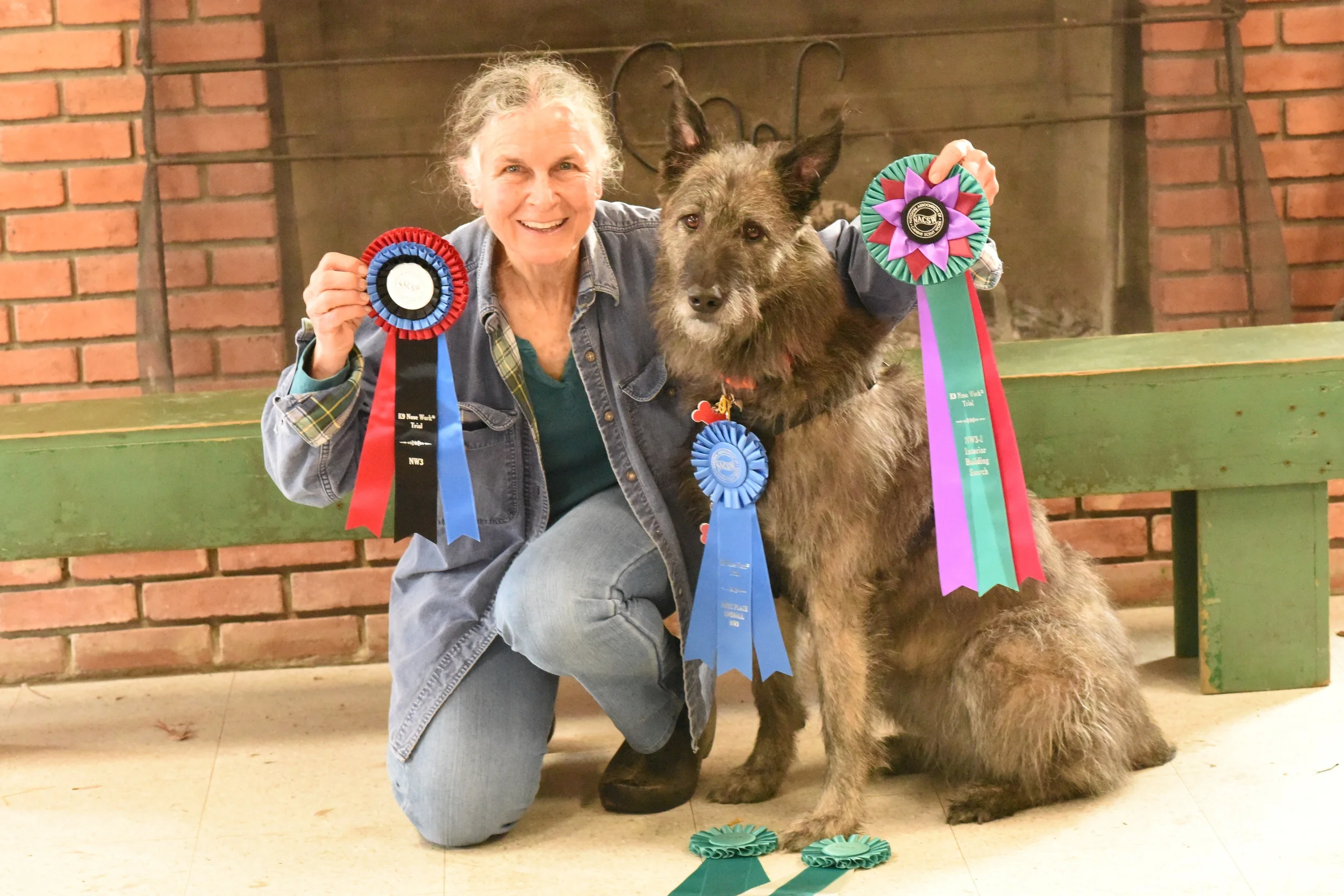How Do I Know if We're
Ready for Competition?
The following guidelines should be considered when determining if you and your dog are competition ready. There may be other considerations to take into account.
ORT Readiness
You and your dog should be successful with ORT boxes in at least five new locations with:
- Blind hides
- Working on a leash
Looking to enter an ORT? Click here for the NACSW ORT Listing.
Trial Readiness
- Birch ORT passed
- Successful in at least 10 new locations with:
- blind hides
- hides up to 4 ft in elevation
- ORT boxes
- Interiors
- Exteriors (with grass included in the search area)
- Vehicles (three vehicles)
- Successfully found hides in under three minutes
- Successfully worked up to five minutes on a hide
- Worked multiple elements back to back
Interested in volunteering or entering an upcoming K9 Nose Work trial? Click here for the NACSW Trial Calendar.
© See Spot Grin, January 2015
From Intro to First Trial
Here's a great resource from the NACSW about the path from your first Intro to K9 Nose Work class, to entering your first trial.
Parking Lot Etiquette: Do's & Don'ts
A list of Do's and Don'ts in the parking lot of a K9 Nose Work trial.
K9 Nose Work Trial Video
You'll find footage of folks competing with their dogs here.
Nose Work Trial Reminders
- Bring your dog’s score book to the trial with you.
- Pee, search, pee. Your dog and you!
- Use the warm up boxes to show your dog why they’re here. It’s not about whether they find the odor box. It’s about them understanding what you’re about to do.
- Trust your dog. He’s done this a thousand times before. He’s a natural, and you’ve done your job well!
- Start watching your dog before you ever get to threshold. Don’t get distracted by the steward bringing you into the search area.
- Don’t crowd the dog. Give him the space he needs to work independently — at least two dog body lengths.
- Don’t expect your dog to alert as strongly at a trial as he will in practice.
- Don’t call the alert too early. Watch for THE DECISION. Listen to the dog.
- Remember that the timer will tell you when you have 30 seconds left. Until then, don’t worry about running out of time.
- Remember your foot work. When you stop moving you sell your dog on a spot. When in doubt test the dog’s commitment by moving.
- Use the recovery boxes however you need to.
- Regardless of the outcome, remember the lessons you’ll learn, and be grateful that you have such an amazing dog with whom to share your life!
GOOD LUCK & HAVE FUN!
© See Spot Grin, December 2012


